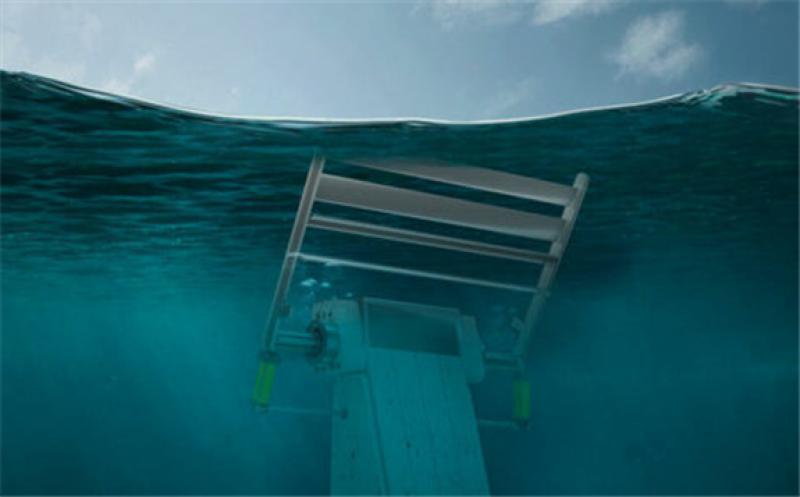Rethinking traditional wave energy converter designs, the researchers at the National Renewable Energy Laboratory (NREL) have started developing the next-generation cost-competitive wave energy system – a variable-geometry oscillating surge wave energy converter (OSWEC) placed on a raised foundation.

Inspired by advances in large-scale additive manufacturing techniques, the raised, variable-geometry OSWEC, or VG-OSWEC, could have the potential to dramatically reduce the cost of subsea foundations, according to NREL.
Using variable geometry, the shape of the wave energy converter (WEC) can be changed so that in more energetic sea states the structural loads are controlled, allowing extended power production.
The NREL team has already started working with the University of Massachusetts at Amherst (UMA) on the design, building and testing plans for the scale model of this novel system, supported by the recently awarded Technology Commercialization Fund (TCF) grant.
The VG-OSWEC could enable deployment in deeper water, for example, potentially increasing power capture due to its ability to operate within the more energetic waves found further offshore. The unique raised structure could prevent bottom scouring in the environmentally sensitive near-shore region, NREL said.
The advanced modular concrete-foundation design owes a debt of gratitude to the offshore wind turbine work currently being carried out by RCAM Technologies – a startup led by former NREL researcher Jason Cotrell.
RCAM’s innovative offshore wind turbine pilings and foundations work could be transferable to the ocean energy community as new low-cost and easily deployable structures become readily available, according to NREL.
By marrying the VG-OSWEC and the cost-effective concrete foundation, the wave energy community can reap the best of what both technologies have to offer, NREL stated.
The novelty of the TCF-awarded design lies in the amalgam of several key features, starting with raising the OSWEC off the seabed while remaining bottom referenced to maintain improved absorption efficiency, and in employing an inexpensive structure to keep overall system-level costs low.
Also, one of the design innovations include incorporating variable-geometry capabilities into the WEC to contend with the forces and loads both the WEC and supporting foundation must withstand during operation.
Recent research suggests that the OSWEC holds promise as a WEC technology because it can obtain some of the highest energy conversion efficiencies. However, to sustain high energy capture, the device must also be designed to withstand extreme wave loads.
By incorporating variable-geometry components into the OSWEC, the peak loads can be reduced while maintaining – or even increasing – energy capture, according to NREL.
Nathan Tom, NREL’s researcher working on the project, said: “Incorporating variable-geometry controls into a WEC is several degrees of complexity beyond the current state-of-the-art wave energy technologies. We hope to demonstrate this next-gen system to help de-risk the technology and encourage industry adoption”.
To evaluate the power absorption and load-shedding control of variable-geometry-enabled devices Tom and his team already explored the possibilities of incorporating the design methodology into three other types of WECs: submerged pressure differential plate design, two-body hinged raft attenuator design, and two-body point absorber with a variable-geometry heave plate design.
The initial case study found that variable-geometry components were successful at improving each of the three tested WEC designs, exhibiting both cost- and load-shedding benefits across all the evaluated technologies.
Now, the team aims to demonstrate the viability of the VG-OSWEC device, ultimately moving it from model to the market.
Variable-geometry components could help the wave energy community break the levelized cost of energy (LCOE) barrier, elevating the feasibility and promise of this renewable energy technology, according to NREL.
This article is reproduced at www.offshore-energy.biz